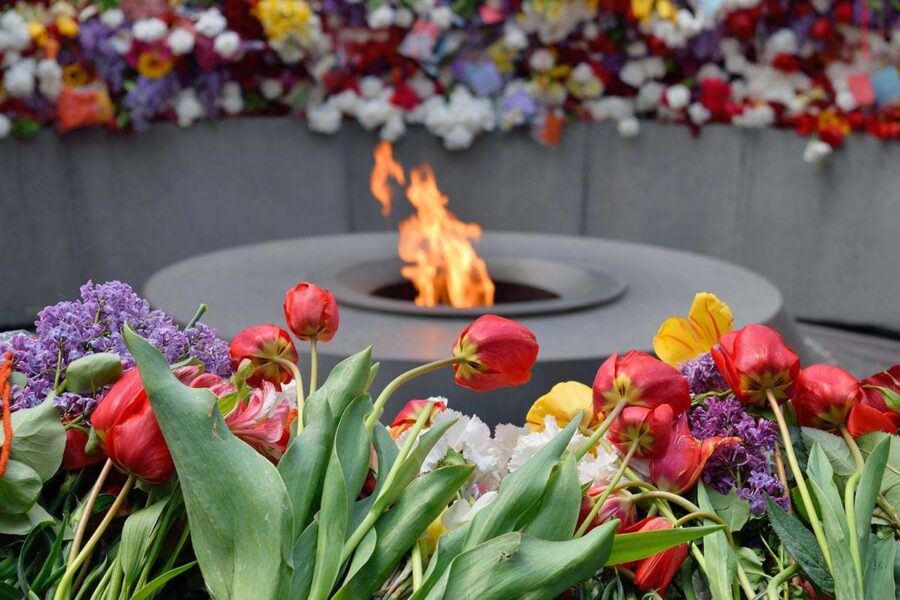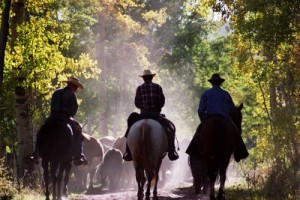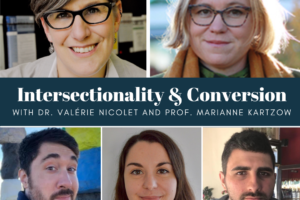I am an Armenian-American. This is something in which I take great pride. It roots my own spiritual and racial identity. April 24 is Armenian Genocide Remembrance Day and for some reason, it never occurred to me until this year that Earth Day (April 22) and the Armenian Genocide Remembrance Day are so close. Upon this realization, I began considering how these two ‘days of remembrance’ might inform each other. I immediately recalled a powerful book called The Christian Imagination by Willie James Jennings. It occurred to me that his discussion of creation and race could be helpful in thinking through the intersection of place and genocide. In this post, by drawing on Jennings’ work in the context of the atrocities perpetrated against Armenians in the twentieth-century I want to communicate a sense of a loss that exists under the surface of our cultural, and even Christian, moral imagination. It is the idea that we as humans are abstracted from land or place; that we are abstracted from animals, trees, and dirt. Because of our distorted moral imaginations, we can live out the contradiction that Christianity, on the one hand, can co-exist with free-floating and shifting geographic spaces of economic calculation, consumerism, private property, materialism, and disordered desires on the other. By drawing this out, I can highlight where issues of creation care have significant overlaps with issues of race, identity, and even genocide.
But first a little history. On 24 April 1915, at the orders of the leader of the Ottoman Empire, hundreds of Armenian intellectuals, activists, and community leaders were rounded up in Constantinople, and across the empire, with the explicit orders to murder the Armenian leadership. This resulted in the torture and elimination of those arrested. In the years to follow, the Turkish government pushed Armenians out of their lands in a near identical way as Indigenous People in this country, which is often called the trail of tears or trail of death. This amounted to a death sentence of Armenians through starvation, disease, rape, and execution. The death of the deportees was the intent of authorities. Bodies were thrown into mass graves or disposed of in rivers. The body count became so high that the Tigris and Euphrates rivers actually became blocked with bodies and were cleared with explosives.
In all, 1.5 Million Armenians were systematically murdered and displaced from our land. Most Armenians live in scattered communities around the world alienated from our homeland—from our mother-country. We had to flee our country and our lands. We lost livelihoods, our history, and our sense of identity. To this day, the Turkish government denies that these events even took place. So proper recognition or reconciliation is impossible.
Further, while there were so many injustices that needed to be addressed in the United States last year, Azerbaijan, in coordination with Turkey, began an offensive against the Armenian territory of Nagorno-Karabakh. Since June there have been over 5,000 deaths, 100,000 displacements, and now 200 POWs, which Azerbaijan refuses to release. This was in 2020.
At this stage you may be asking yourself, what does this have to do with a theology of place, or even creation for that matter? Displacement of a people is not just about being forced off of the land, as horrible as this is. It is a displacement of personhood. Land, place, matter.
Many Armenians have in their home a painting or photo of Mount Ararat. I wear an image of this place around my neck. For Armenians, Ararat is a symbol of lost land west of the mountain that is now part of Turkey and where many Armenians lived before the genocide. Ari Goldman wrote, “In most Armenian homes in the modern diaspora, there are pictures of Mount Ararat, a bittersweet reminder of the homeland and national aspirations.”[1]
Armenians find our identity in a shared suffering and in refugee stories. Displaced Armenians, in particular those who eventually made it to the Americas, were put in a situation to redefine our identities within this new context, and within this new place. We were forced through social pressure to stop speaking our language, to mitigate our cultural distinctiveness and beauty, and to assimilate. Displacement, suffering, and violence, made possible conceptions of whiteness and otherness.
Creation matters, if for no other reason than the land that bears significance for us can create or destroy our identity as individuals and a people. The ordering of existence and identity around whiteness is an “architecture that signals displacement.”[2] Jennings helpfully writes, “One cannot understand what is at stake in the formation of whiteness until one understands this new order of things unleashed by colonialism. The refashioning of bodies in space to form racial existence makes little sense without seeing simultaneously the refashioning of space.”[3]
And this is where the Armenian Genocide, along with other egregious displacements and genocides becomes explicitly theological. We have a distorted view of creation, of race, or personhood, if we do not think that “the story of race is also the story of place.”[4] Colonized Christian doctrines of creation have lost the sense that there are deep connections between place and identity because these understandings cannot be separated from market desires and private property. Colonialism has distorted our vision of place and bodies and reduced theological anthropologies to commercialized bodies and into a power dynamic which creates difference and distinction. Again, Jennings helpfully writes, “With the emergence of whiteness, identity was calibrated through possession of, not possession by, specific land…racial agency and especially whiteness rendered unintelligible and unpersuasive any narrative of the collective self that bound identity to geography, to earth, to water, trees, and animals.”[5] When the disconnection between people and place (and the rest of creation) happens, there is no alternative than the creation of race.
Place and stories bring to life the moral imagination, and it was my hope that in telling the story of genocide and the attempted extermination of my people we get a sense of this imperceptible loss. We need to reacquire a sense of connection to the earth, this is what has been lost. How is it that we can rebuild this connection?
At this stage I would like to, humbly, make a suggestion as to how we might begin to reimagine place and creation more deeply. How we might relearn to experience God in places. Since the Enlightenment, Christians have done a bad job of describing God’s relationship to creation. For most of the Christian tradition, God was thought to be present in creation, while being completely other. To say that God is ‘outside’ creation is post-enlightenment language. God, the object of the contemplative and blessed vision in the next life, can be imperfectly glimpsed through contemplative vision in this life. Awareness of divine satiation can be kindled at any moment. Many of the experiences that one may have during a normal day can be worthy of praise and justly be attributed to a contemplative life as a foretaste of the perfect joy of the life to come.[6] Anytime we exclaim from the depths of our soul “wow,” from our engagement with creation, that is a moment of worship. When we are blown away by a rose, a tree or the taste of an apricot, these moments of affirmation of the world draw us into a sense of God’s loving presence. “A Christian doctrine of creation is first a doctrine of place and people, of divine love and divine touch, of human presence and embrace, and of divine and human interaction. It is first a way of seeing place in its fullest sense.”[7]
The abstraction from place that has become so common to western Christianity has had dire effects because the loss of land disrupts our moral vision.[8] So, engaging place in restful contemplative vision can shape habits of life and teach us how to live, because place carries a power to shape our moral imagination and vision. Briefly, as I draw to a close, I want to suggest how creation might teach us how to reengage it and thus shape our moral imaginations.
Considering the natural rhythms of the world around us, I think that one of the lessons we can glean and then implement into our habits of life is the need for Sabbath and contemplative rest. We find ourselves in a world that encourages working ourselves to death. If we are not consuming, producing, or buying then we have no real significance. There is almost no place in our culture for rest and the passive taking in of the world around as a divine gift. There is a deep connection between creation and rest. Old Testament scholar Walter Brueggemann writes that Sabbath, “is the great day of equality when all are equally at rest.” He continues, Sabbath “breaks the pattern of coercion, all are like you, equal—equal worth, equal value, equal access, equal rest.”[9] Brueggemann also applies the above to all of creation, including immigrants, animals, and the earth itself. Because the Sabbath day has to do with equality, it necessarily has some connection to justice. In the command to Sabbath we learn that God is a God for us, a God that loves us enough to give us space to worship away from our labors, and that this extends to the places around us, God’s own creation.
The person who is characterized by pure action, believes that the origin of the universe, of reality, resides in themselves. “For the person of absolute praxis, who turns up repeatedly throughout the history of thought, nature is no longer something welcomed, listened to, and contemplated; rather, it is summoned to respond to the questions posed to it.”[10] As a result, we squeeze the earth and others for all their worth without sufficient time for genuine rejuvenation. Stephanie Spellers in her new book Church Cracked Open notes that conquerors used the displacement of people along with forced labor to erase cultural sources of identity which made them dependent on colonial rule.[11] If the church is going to be a legitimate alternative to this way of life, then the church will need to reckon with the ways that it has contributed to this workaholic culture, and keeps us from developing a robust and decolonized moral imagination.
If we can’t take a day off, if we can’t take our eyes of our phone, if we can’t stop working and simply sit and gaze out into nature then we are not only depriving ourselves of the ways that place helps us reimagine our world, but we may also be contributing to systems of oppression which value industry, purchasing, and economic growth over people and place. I fear that the world has yet to see this kind of counter-cultural Christian moral vision, one that truly values people and place without instrumentalizing or dehumanizing them, and making their elimination plausible when they are no longer useful. Our continuation within this frame of mind only fuels this disordered imagination while also crippling our current and future community’s own sense of identity.
My task here was to highlight where our theological and moral imaginations have been diseased because of western Christianity’s lack of ability to see the profound connections between place, self-understanding, refugees, and systems of injustice. If we are to disentangle ourselves from our current political and moral imaginations that deemphasize place and people in favor of dehumanizing workaholic culture, then we must learn to see that place matters in ways that we have yet to consider in our time. We need a better theology of place which is disentangled from a life that does not allow us the space to Sabbath and experience God through place.
Works Cited
Brueggemann, Walter. Sabbath as Resistance: Saying No to the Culture of Now. Louisville: Westminster John Knox Press, 2017.
Goldman, Ari. “A History Full of Anguish and Agony; The Armenians, Still ‘Like Job’s People.’” New York Times, 1988.
Jennings, Willie James. The Christian Imagination: Theology and the Origins of Race. New Haven: Yale University Press, 2010.
Pieper, Josef. “Down-to-Earth Contemplation.” In Problems of Modern Faith: Essays and Addresses, translated by Jan Van Heurch, 149–56. Chicago: Franciscan Press, 1986.
Schumacher, Bernard N. A Philosophy of Hope: Josef Pieper and the Contemporary Debate on Hope. New York: Fordham University Press, 2003.
Spellers, Stephanie. The Church Cracked Open. New York: Church Publishing, 2021.
[1] Ari Goldman, “A History Full of Anguish and Agony; The Armenians, Still ‘Like Job’s People,’” New York Times, 1988.
[2] Willie James Jennings, The Christian Imagination: Theology and the Origins of Race (New Haven: Yale University Press, 2010), 25.
[3] Jennings, 63.
[4] Jennings, 289.
[5] Jennings, 59.
[6] Josef Pieper, “Down-to-Earth Contemplation,” in Problems of Modern Faith: Essays and Addresses, trans. Jan Van Heurch (Chicago: Franciscan Press, 1986), 149–56.
[7] Jennings, The Christian Imagination: Theology and the Origins of Race, 289.
[8] Jennings, 54.
[9] Walter Brueggemann, Sabbath as Resistance: Saying No to the Culture of Now (Louisville: Westminster John Knox Press, 2017), 40–41.
[10] Bernard N. Schumacher, A Philosophy of Hope: Josef Pieper and the Contemporary Debate on Hope (New York: Fordham University Press, 2003), 15.
[11] Stephanie Spellers, The Church Cracked Open (New York: Church Publishing, 2021), 41–42.





Leave a Reply
Your email is safe with us.